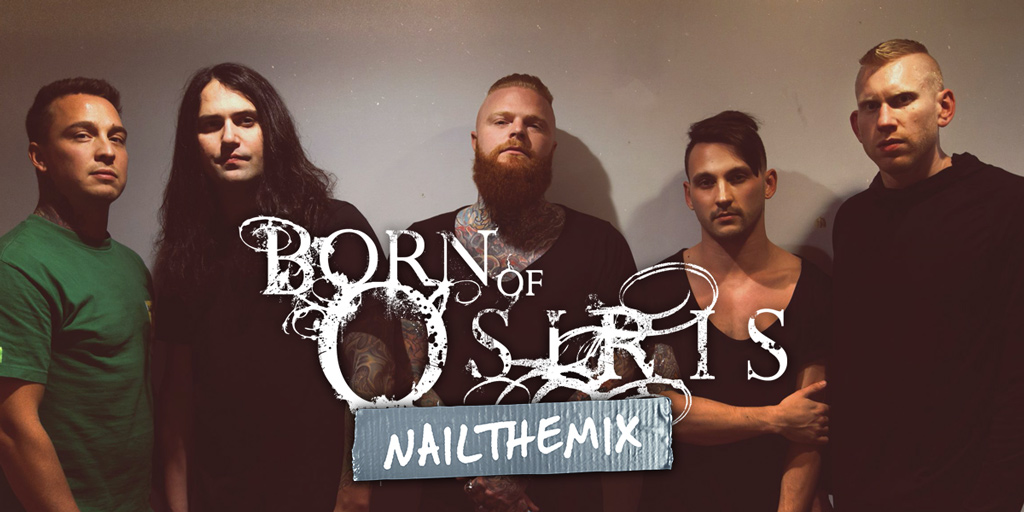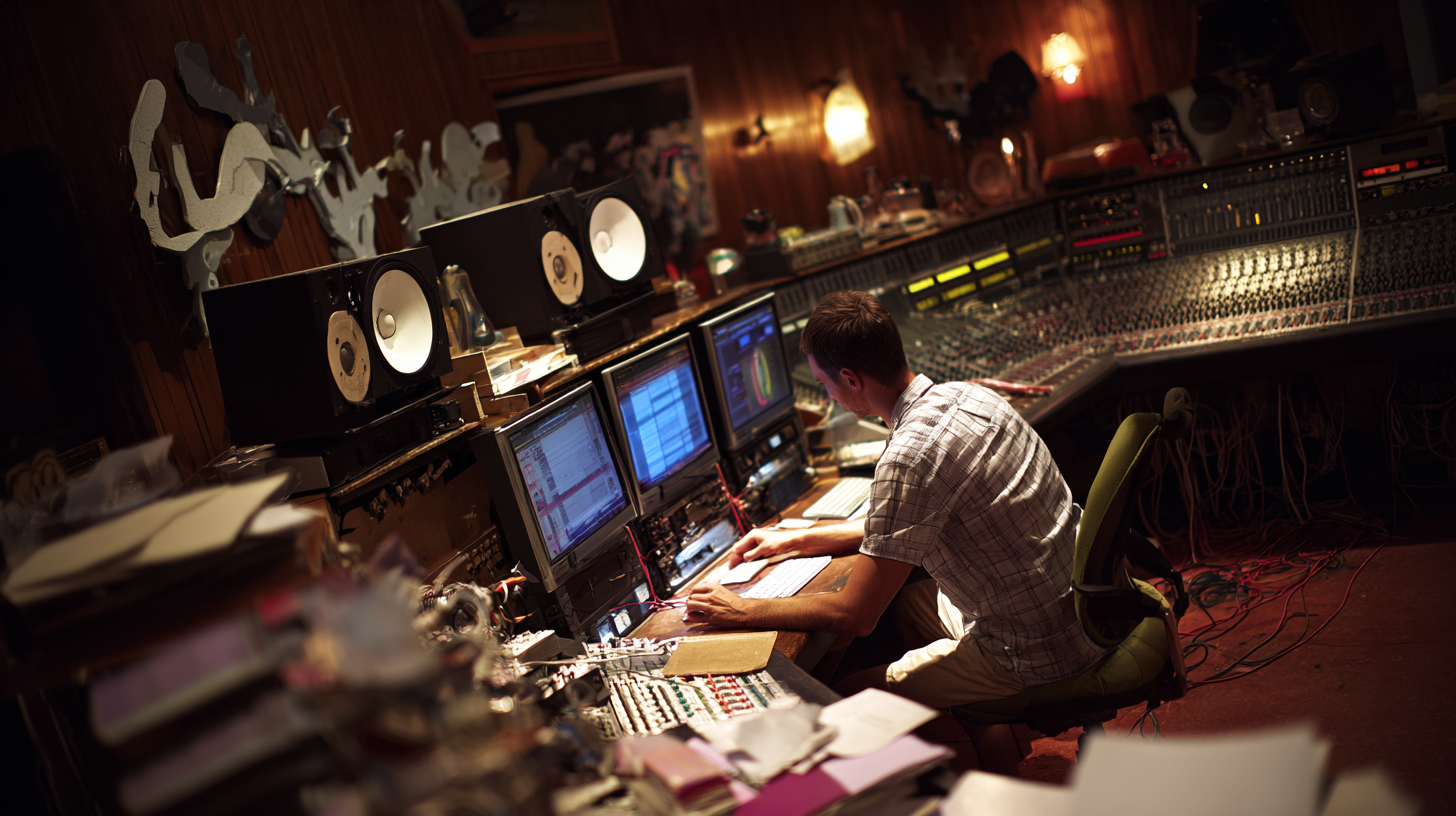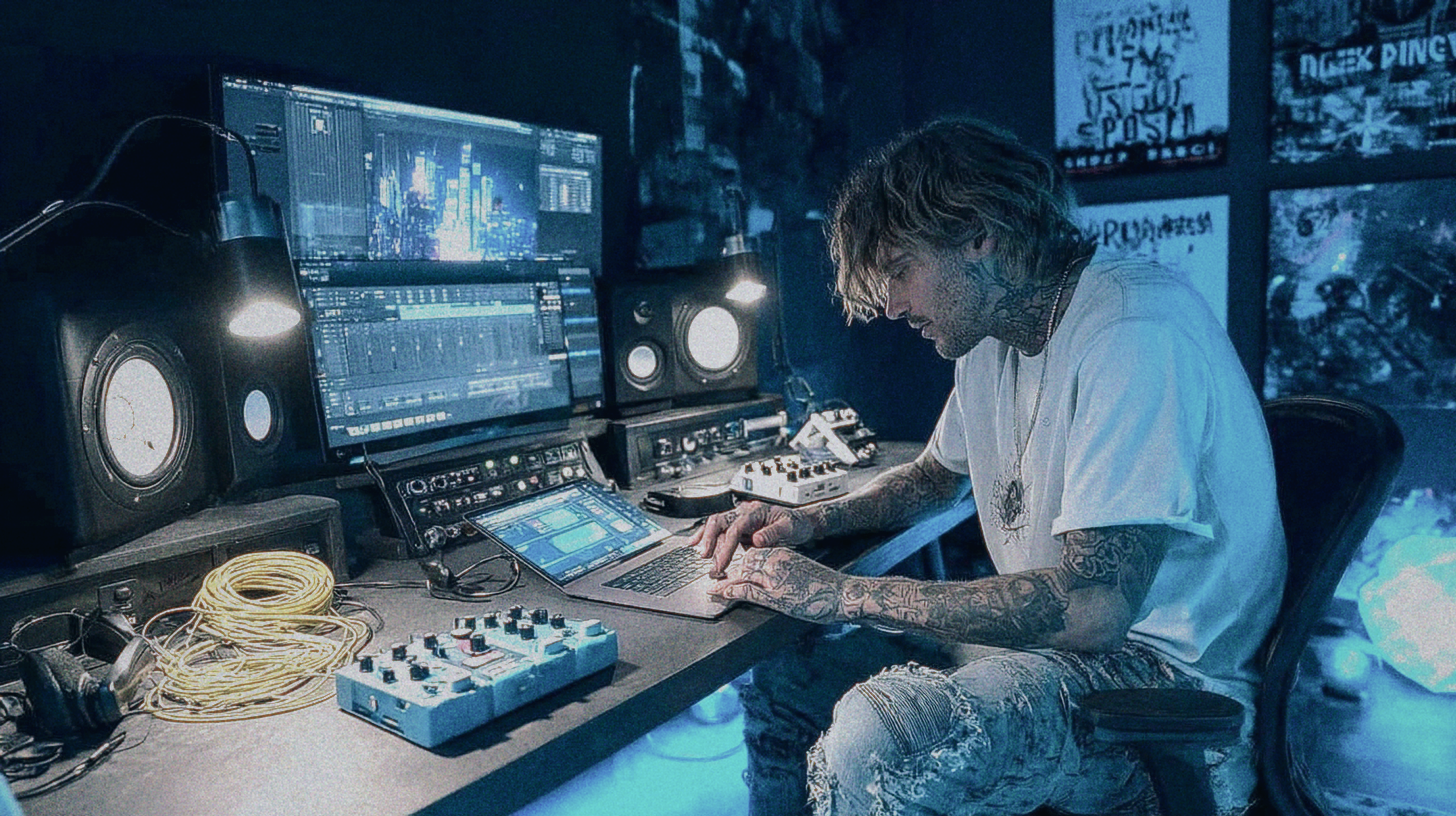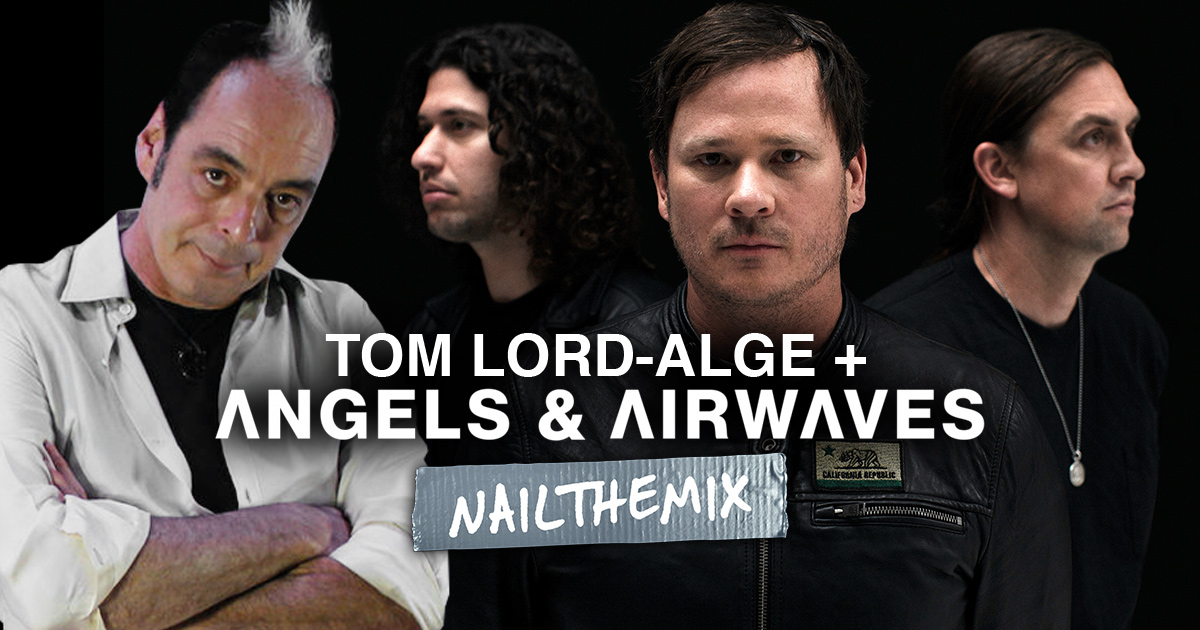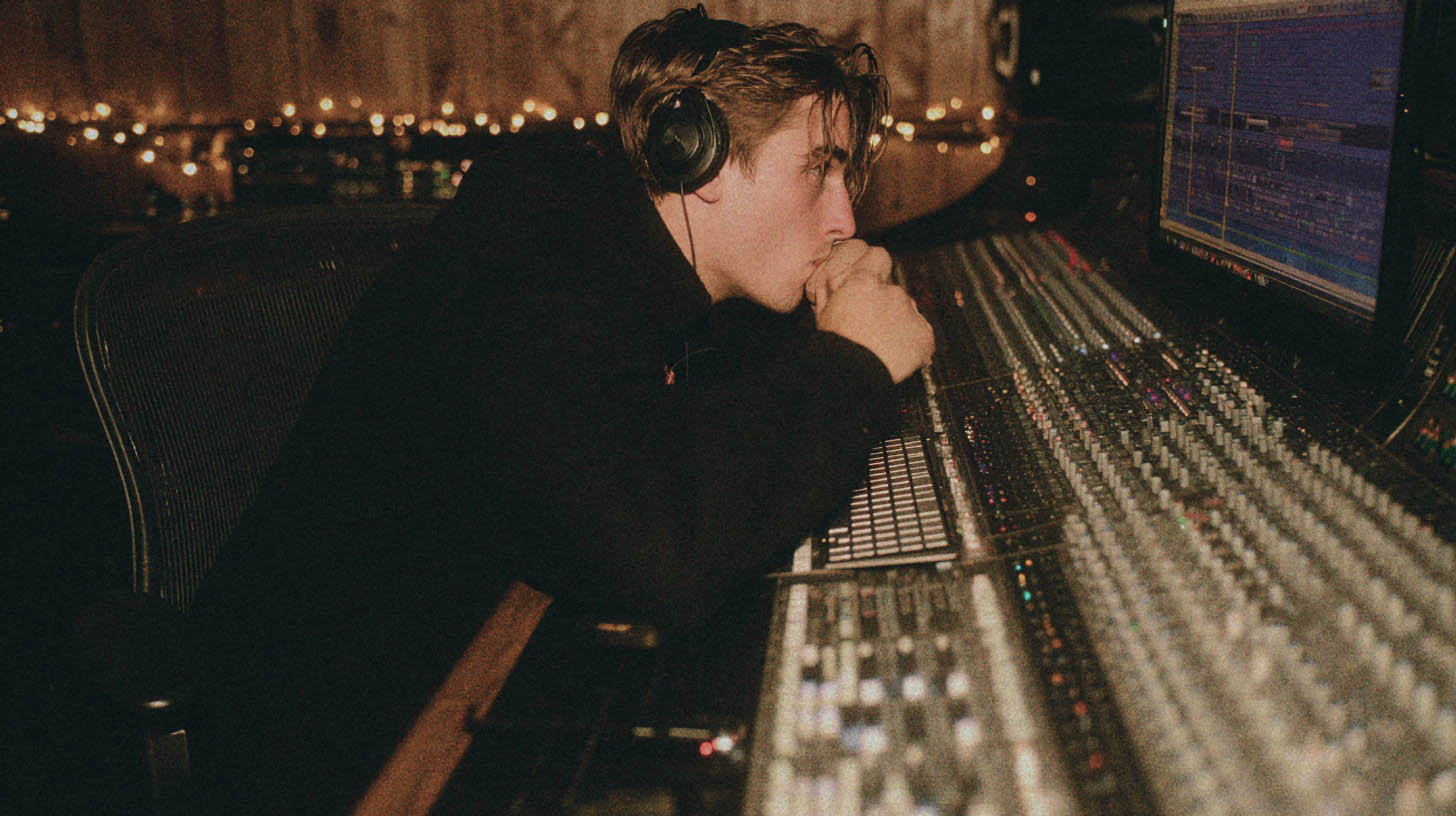
Mixing Fall Out Boy Vocals with Sean O’Keefe
Nail The Mix Staff
Let’s talk about iconic rock vocals. Patrick Stump’s performances are the undeniable centerpiece of every Fall Out Boy track. They’re powerful, they’re soulful, and they always cut through a dense wall of guitars and drums. But how do you take a raw vocal performance like that and make it sit perfectly in a high-energy mix?
We got a masterclass from producer and mixer Sean O’Keefe (The Audition, Motion City Soundtrack) as he broke down his exact vocal chain for Fall Out Boy’s track “Lake Effect Kid” during his live Nail The Mix session.
Turns out, his approach is a killer combination of a surprisingly simple “shortcut” and a detailed, custom-built plugin chain. Let’s dive into how he gets that signature Fall Out Boy vocal sound.
The “Embarrassing” Shortcut That Just Works
What’s the very first plugin Sean often reaches for on a lead vocal? The Waves CLA Vocals plugin. It’s a bit of a running joke in the production community; everyone seems to use it, but many feel a little weird admitting they use an “all-in-one” tool.
Sean’s take? Get over it.
The reality is, when you’re deep in a mix and need to get the vocal sitting right so you can work on other instruments, speed is everything. Fumbling with ten different plugins can kill your creative momentum. The CLA Vocals plugin, often on the “Start Me Up” preset, gets the vocal 90% of the way there in seconds. It allows you to stay excited and in the zone while building the track around a vocal that already sounds close to finished.
Sometimes he’ll keep it on the track. Other times, he’ll use it as a benchmark and try to beat it with his own chain. Which brings us to his custom process…
Building a Pro Vocal Chain from Scratch
For “Lake Effect Kid,” Sean built a detailed vocal chain to give Patrick’s performance the precise control and character it needed. Here’s a step-by-step breakdown of his plugin choices and settings.
Taming Harshness Before You Boost
The first thing Sean does is clean up any problematic frequencies. Patrick’s vocal has an aggressive quality that can be a little harsh on the ears, and you need to tame that before you start adding top-end sparkle.
Soothe2 for Surgical Control
Instead of grabbing a traditional EQ, Sean starts his chain with Oeksound Soothe2. This plugin is essentially a dynamic resonance suppressor—it intelligently listens to the audio in real-time and ducks harsh, unpleasant frequencies without affecting the overall tone. Sean dials in the depth knob to catch aggressive pops and resonances, like on the word “get,” which keeps the vocal smooth and listenable even when it’s loud.
Adding Character and Body with Saturation & Compression
With the harshness controlled, it’s time to add weight, vibe, and character. This is where the vocal goes from being just a clean recording to a powerful, in-your-face element of the mix.
Phoenix II for Fullness
This subtle saturator is used to add a bit of weight and body to the vocal. It’s not an obvious effect, but it brings out a certain fullness in Patrick’s voice that helps it feel more substantial.
Waves CLA-76 for Vibe
Next up is some classic compression. Sean isn’t necessarily using this 1176-style compressor to smash the dynamics—the vocal is already quite consistent. Instead, he’s using it for character. The CLA-76 imparts a certain punch and attitude that helps the vocal feel more energetic and forward.
Culture Vulture for Aggression
To add even more grit, Sean turns to the Thermionic Culture Vulture plugin. This is a powerful distortion unit, but he uses it as a parallel effect, blending in just a small amount with the mix knob. This adds a layer of aggressive texture and harmonics without overwhelming the core vocal tone. It’s a fantastic trick for helping a vocal cut through heavy guitars.
The Final Polish with Strategic EQ
Now that the vocal is controlled and has plenty of character, the final step is to shape the tone with EQ to make it sit perfectly in the mix.
Sean uses a couple of stages of EQ. An early boost of about 3dB at 5kHz adds presence and clarity. Later in the chain, after the compression and saturation, he adds a final EQ to perfect the tone, adding:
- Body around 140 Hz
- Mid-range push around 1.5 kHz
- Air and sparkle with a shelf at 10 kHz
Finally, a simple de-esser is placed at the end of the chain to tame any sibilance (“s” sounds) that may have been exaggerated by the compression and EQ boosts.
The Payoff: Why This Chain Makes the Vocal Cut Through
Hearing the vocal in solo, the difference between the unprocessed track and the fully processed one is clear—it’s more present, controlled, and exciting.
But the real magic happens when you bring the drums back in.
The raw, unprocessed vocal gets lost. It swims in and out of the mix, buried by the snare and cymbals. The fully processed vocal, however, stays right in your face. It’s loud, proud, and sits perfectly on top of the instrumentation, never getting lost. That is the power of a well-crafted vocal chain. Each subtle move—the taming with Soothe, the character from the compressors and saturators, the strategic EQ boosts—all adds up to a vocal that can command a dense, powerful rock mix.
Take Your Mixes to the Next Level
These techniques from Sean O’Keefe are an incredible starting point for getting pro-sounding rock vocals in your own productions.
But imagine watching him dial in these settings in real-time, explaining every decision, and then applying this same level of detail to the drums, bass, and guitars. With Nail The Mix, you can.
Fall Out Boy on Nail The Mix
Sean O'Keefe mixes "Lake Effect Kid"
Get the Session
When you subscribe, you get to be a fly on the wall for sessions just like this one every single month. You get the raw multi-tracks to practice on, plus access to our massive library of tutorials and courses. Stop guessing and start learning the techniques the pros use to craft massive-sounding records.
Click here to get the Fall Out Boy multi-tracks and watch Sean O’Keefe’s full mixing session.

